#Stone Texture
Explore tagged Tumblr posts
Text








~
6 notes
·
View notes
Text

Modern Stone Texture
Wall cladding designs are revolutionizing modern interiors, offering innovative ways to enhance aesthetic appeal and functionality. From textured stone walls that bring a rustic charm to sleek metal panels adding a contemporary vibe, the latest trends cater to diverse tastes. Wooden claddings remain timeless, while 3D panels offer depth and intrigue, perfect for accent walls. Natural materials like bamboo and brick are also making a comeback, reflecting a shift towards eco-friendly designs. Explore these trending wall cladding designs to elevate your living spaces effortlessly.
0 notes
Text

#Case IH logo#brands#gray stone background#Case IH emblem#popular logos#Case IH#metal signs#Case IH metal logo#stone texture#wallpapers
0 notes
Text
Stone Finish Texture: Enhancing Your Space with Timeless Elegance
Introduction: Stone finish textures offer a classic, sophisticated look that adds depth and character to any space. Whether you're aiming for a rustic charm or modern elegance, stone finish textures can transform walls, floors, and other surfaces into standout features. This guide explores the benefits of stone finish textures, different types available, and tips for incorporating them into your design.

Problem: Conventional Finishes and Their Limitations
Lack of Depth and Character:
Traditional finishes like paint or laminate may lack the texture and visual interest that stone finishes provide.
These finishes can appear flat and unremarkable, failing to make a significant impact on the overall design.
Maintenance Challenges:
Conventional materials may not offer the same level of durability as stone finishes, leading to wear and tear over time.
Regular maintenance and repairs can be necessary to keep surfaces looking their best.
Agitation: Consequences of Inadequate Finishes
Aesthetic Shortcomings:
Standard finishes may not create the depth and richness that stone textures can offer, leading to a less dynamic design.
Lack of texture and visual interest can make spaces appear bland and uninviting.
Higher Long-Term Costs:
Frequent repairs and replacements of conventional finishes can result in higher long-term costs.
The need for ongoing maintenance can detract from the enjoyment and functionality of the space.
Solution: Embracing Stone Finish Textures
Introduction to Stone Finish Textures:
Stone finish textures replicate the appearance and tactile qualities of natural stone, providing a timeless and elegant look.
These textures can be applied to various surfaces, including walls, floors, and countertops, to create a sophisticated and durable finish.
Benefits of Stone Finish Textures:
Timeless Aesthetic:
Stone finish textures offer a classic and refined look that never goes out of style.
They add depth, richness, and visual interest to spaces, enhancing the overall design.
Durability and Longevity:
Stone finishes are highly durable and can withstand wear and tear, making them ideal for high-traffic areas.
They are resistant to damage, stains, and moisture, ensuring long-lasting performance.
Low Maintenance:
Stone finishes are easy to maintain and clean, requiring minimal upkeep compared to some conventional materials.
Regular cleaning and occasional sealing can keep the stone finish looking fresh and vibrant.
Versatility in Design:
Stone textures come in various styles, colors, and patterns, allowing for customization to suit different design preferences.
Whether you prefer a rough, rustic look or a smooth, polished finish, stone textures offer flexibility in design.
Popular Types of Stone Finish Textures:
Exposed Aggregate:
Exposed aggregate finishes feature a surface with visible stones or pebbles, providing a rugged and natural appearance.
This texture is ideal for adding a rustic or outdoor feel to floors and walls.
Tumbled Stone:
Tumbled stone finishes have a weathered, antique look with rounded edges and a soft texture.
This finish is perfect for creating a vintage or traditional aesthetic in interiors.
Polished Stone:
Polished stone finishes offer a smooth, glossy surface that reflects light and enhances the beauty of the stone.
This finish is suitable for creating a sleek, modern look in contemporary spaces.
Honed Stone:
Honed stone finishes have a matte, non-reflective surface with a smooth texture.
This finish is ideal for achieving a subtle, elegant appearance in both traditional and modern designs.
Brushed Stone:
Brushed stone finishes have a textured surface created by brushing the stone with a wire brush.
This finish provides a tactile quality and is suitable for adding depth and character to surfaces.
Split-Face Stone:
Split-face stone finishes feature a rugged texture with a split or fractured surface, mimicking natural stone formations.
This finish adds a dramatic and organic look to walls and other vertical surfaces.
Practical Tips for Incorporating Stone Finish Textures:
Select the Right Type:
Choose a stone finish texture that complements the overall design and function of the space.
Consider factors such as color, pattern, and texture to achieve the desired look and feel.
Professional Installation:
For the best results, hire professionals experienced in applying stone finishes. Proper installation ensures a high-quality and long-lasting finish.
Professionals can handle the complexities of surface preparation, application, and finishing.
Surface Preparation:
Prepare surfaces properly before applying stone finishes by cleaning, repairing, and priming as needed.
Proper preparation enhances adhesion and ensures a smooth, even application.
Maintenance and Care:
Follow manufacturer guidelines for sealing and maintaining stone finishes to protect them from damage and maintain their appearance.
Regular cleaning with mild detergents and periodic sealing can help preserve the beauty of the stone finish.
Design Integration:
Integrate stone finishes with other design elements, such as lighting, furniture, and accessories, to create a cohesive and harmonious look.
Consider the overall color scheme and design style to ensure that the stone finish complements the space.
0 notes
Photo
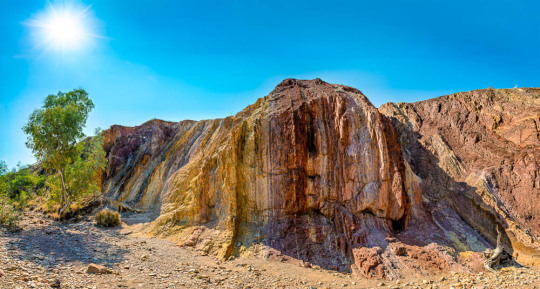
Located 110km west of Alice Springs, the pits are a colourful outcrop of ochre on the banks of a sandy creek. Ochre occurs in a range of earthy colours ranging from white, yellow, orange, red and browns. It’s an important part of Aboriginal culture and is used in everyday life. It’s the raw material for paintings and ceremonial body decoration.
#2023-09-10#Australia#Burt Plain#Daytime#Dirt#Grass#Gravel#Holiday 2023#Image#MacDonnell Ranges#Natural environment#Nature#Northern Territory#ON1 Keyword AI#Plant#Rock#Stone Texture#Texture#Tree#Vivid
1 note
·
View note
Text
SketchUp is a popular 3D modeling software that allows users to create complex structures with ease. One of the most important features of SketchUp is the ability to create stone and curtainwall structures.
Introduction to Stone and Curtainwall Structures
Stone and curtainwall structures are two of the most commonly used types of building facades. Stone facades are typically used in more traditional or historic buildings, while curtainwalls are used in modern buildings. Both types of structures provide an aesthetically pleasing appearance while also providing protection from the elements.
Creating a Stone Structure in SketchUp
Step 1: Choosing the Right Materials
The first step in creating a stone structure in SketchUp is to choose the right materials. There are many different types of stone available, each with its own unique texture and color. It is important to choose a stone that matches the style of the building you are creating.
Step 2: Creating the Walls
The next step is to create the walls of the structure. To do this, use the rectangle tool to create a rectangle that is the same size as the wall you want to create. Once the rectangle is created, use the push/pull tool to extrude the rectangle to the desired height.
Step 3: Adding the Stone Texture
Once the walls are created, it is time to add the stone texture. To do this, open the materials window and select the stone texture you want to use. Then, click on the wall to apply the texture.
Step 4: Adding Detail
To make the stone structure more realistic, it is important to add detail. Use the line tool to create lines that mimic the pattern of the stones. Then, use the push/pull tool to extrude the lines slightly to create a 3D effect.
Read more
0 notes
Text

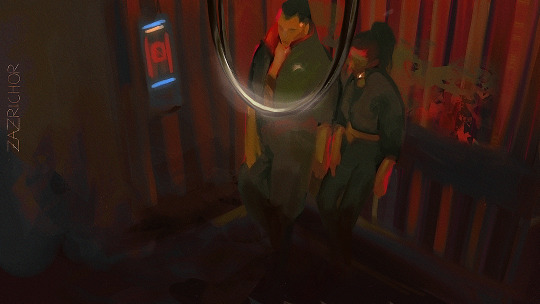




cp2077 studies
#cyberpunk 2077#cyberpunk 2077 fanart#cp2077 fanart#johnny silverhand#v cyberpunk#zazrichart#procreate#studies#i wanted to do these like i sid my film studies of star//wars#*did#but they developed their own style which i quite like#less detailed scatches (💔)#but more loose#and i used a brush i made a while ago which was supposed to help with stone texture
3K notes
·
View notes
Text

your admiration is inevitable.
#💉heretic's art#stobotnik#agent stone#dr robotnik#made for a playlist cover and also to experiment with pixel art gradient texturing etc#had So Much Fun with this <3
440 notes
·
View notes
Text

With a beautiful view I have been blessed
Malleus in my heart. You can see the original art here and read the monster list here @lustlovehart
#I imagine your hands by the use are quite soft#Like a river stone#I love the fact that her hair was originally moss. My brain saw it in stone completely for some reason#I had a lot of fun sticking on stones and their texture#twst fanart#twst wonderland#twst#malleus draconia#twst malleus#twisted wonderland malleus#fanart#digital drawing#digital art#digital painting#honneydraws ⊹⃬۫🍜̸᩠໋࣪꣹۫
688 notes
·
View notes
Text
Day one of me trying to make better Drift figure than Hasbro ',:)

Okay okay so. I found this (checks the box) Gundam Aerial Model Kit? Look at this thing. It is basically already Drift. It has really similar type of figure and even finals:D I still need to find a way to make his massive shoulder plates though.
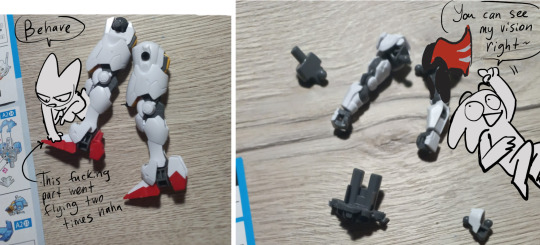


☆
#idw drift#mtmte drift#maccadam#drift#I have this thought#I wanna make him like..maybe rusty? or. like old weathered metal?#Idk I'm being inspired by Empire of stone and also a lot of videos on my fyp with people painting metal textures on their models#also painting Blurr in basically one flat color was incredibly boring#I wanna add some fun textures maybe probably#we'll see how it'll go#I'm...not sure about my “painting with a brush” skills...
475 notes
·
View notes
Text









Wolf agere stimboard
×/×/× ×/× ×/×/×
#text#autismposting#stim#gifs#stim toys#agere stim#sfw agere#agere community#sfw age regression#petre#pet regression#pet regressor#wolf stim#wolf therian#worry stone stim#plush#toy stim#figure stim#my gifs#playground stim#nature stim#body stimming#body stim#forest stim#irl animals#cute stim#plushie stim#soft stim#texture stim#tactile stim
285 notes
·
View notes
Text

#HiPhi logo#brands#gray stone back ground#HiPhi emblems#popular logo#HiPhi#metal sign#HiPhi metal logo#stone texture#wallpapers
0 notes
Photo

lilac season
#jolyne cujoh#Jolyne Kujo#jjba#JoJo's Bizarre Adventure#Stone Ocean#deliart#this has been in the works for like 3 months<3 but im picky with colors so<3#just been into tweedlike fabrics lately#so this is my first attempt to do that texture#also ofc its heavily based on that one chanel runway etc etc and yes if im doing that#im also supposed to draw camellias since thats their thing#but lilacs are blooming and they are my fav flower overall so <33#like for scent citrus flowers win so hard. and for looks its hydrangeas. but for overall package? lilacs easiest win of all time#STILL can't find a good lilac perfume i tried the issey miyake one but what was up with that milky aftersmell :(#ALSO ONLY GOT TOLD LILACS ARE EDIBLE THIS YEAR!!!!#i should try to make lilac lemonade. i heard that's where it's at
2K notes
·
View notes
Text
Innovative Uses of Stone Finish Texture in Modern Architecture

Introduction
Stone finish texture in the ever-evolving world of modern architecture, innovative materials and textures are constantly being explored. One such material that has gained significant attention is the stone finish. Known for its durability and aesthetic appeal, stone finish is being creatively incorporated into various architectural designs, from residential homes to commercial buildings.
Problem
Modern architecture design often seeks to blend functionality with aesthetic appeal. However, achieving this balance can be challenging with conventional materials. Architects and designers are constantly on the lookout for materials that not only enhance the visual appeal of a structure but also offer practical benefits such as durability, low maintenance, and sustainability.
Agitate
The quest for innovative materials is driven by several factors. First, there's the need to create buildings that stand out in terms of design and visual appeal. Traditional materials like concrete, brick, and wood, while reliable, can sometimes limit the creative potential of architects. Secondly, there's an increasing demand for sustainable materials that minimize environmental impact.
Solution
Stone finish texture addresses these issues effectively. Let's explore how.
1. Aesthetic Versatility
One of the most compelling aspects of stone finish is its aesthetic versatility. It can be applied to various surfaces, including walls, floors, and facades, to create a range of visual effects. Whether you're aiming for a rustic look reminiscent of ancient architecture or a sleek, modern finish, stone finish can be adapted to suit your vision.
2. Durability and Maintenance
Stone finish is not just about looks; it also offers practical benefits in terms of durability and maintenance. Architectural stone is known for its resilience. Unlike many synthetic materials, it doesn't easily succumb to wear and tear. This makes it an ideal choice for high-traffic areas such as hallways, lobbies, and commercial spaces.
3. Environmental Sustainability
In the age of sustainable architecture, stone finish stands out as an eco-friendly option. Natural stone is abundant and can be sourced with minimal environmental impact compared to synthetic materials that require extensive processing. Additionally, the longevity of stone means fewer replacements over time, reducing the overall consumption of resources.
4. Innovation in Application
Modern architecture design thrives on innovation. Stone finish opens up new possibilities for creative expression. For example, stone veneer panels can be used to create intricate patterns on facades, adding a unique touch to building exteriors. In interior design, stone finish can be applied to feature walls, countertops, and even ceilings, offering a variety of ways to incorporate natural beauty into the design.
5. Stone Finish Texture in Residential Architecture
In residential architecture, stone finishes are becoming increasingly popular for its ability to enhance both the interior and exterior of homes. On the exterior, stone finish can be used for facades, driveways, and garden pathways, adding a touch of elegance and durability. Inside the home, stone finish flooring in kitchens, bathrooms, and living areas not only looks great but also stands up to daily wear and tear.
6. Stone Finish Texture in Commercial Architecture
Commercial spaces benefit greatly from the use of stone finish. Retail stores, restaurants, hotels, and office buildings all seek to create environments that are both inviting and durable. Stone finish meets these needs by offering a high-end look that can withstand heavy foot traffic and frequent cleaning.
1 note
·
View note
Text
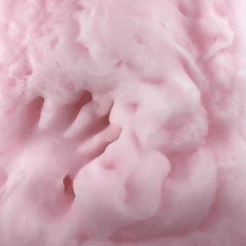
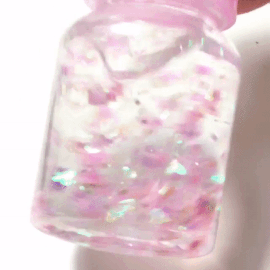
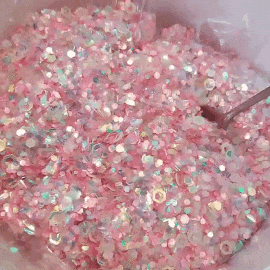
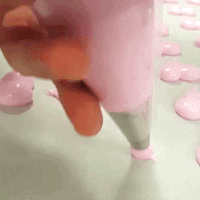
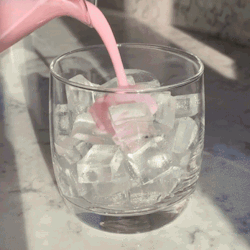
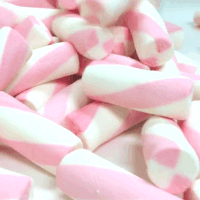
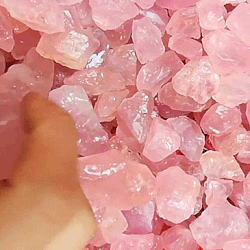
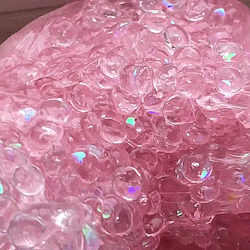
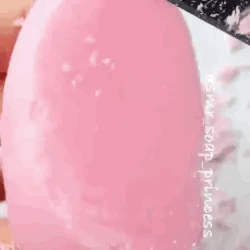
✩ pastel pink stim board ✩
pls show support with likes + reblogs ! it means more than you know !
follow for daily stim boards!♡
#slime#sensory#food stim#stim gifs#stim blog#slime stim#frosting#food#soft stim#soft texture#visual stim#glitter#glitter stim#stim board#soap stim#stimblr#paint stim#gummy stim#stimboard#stimmy#drink stim#stone stim#rock stims#gem stims#stim#pink stim#daily post#daily stims#soap carving#httptrinket
322 notes
·
View notes
Text

Natural stone texture.
Black and white photograph.
#stone#stones#natural stone#texture#textures#stone texture#photography#photo#photograph#picture#image#black and white#blackandwhite#still life
1 note
·
View note